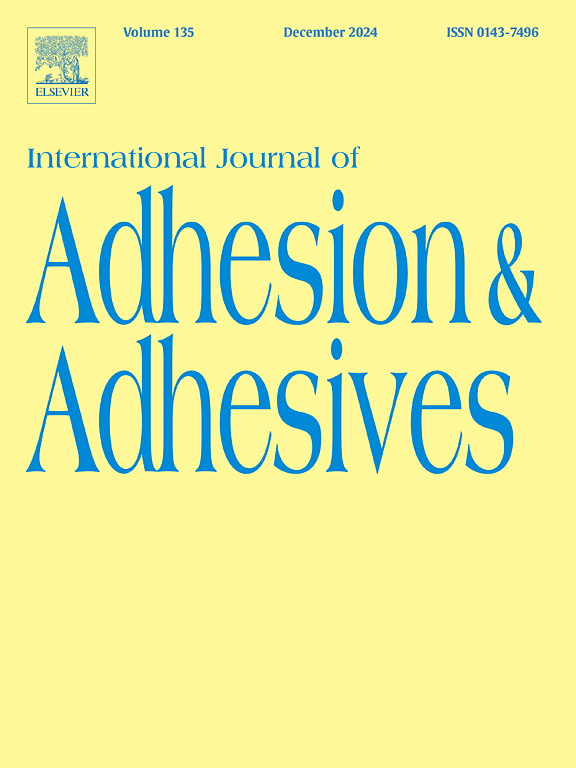Microscopic interaction behavior of rubber modified asphalt-aggregate interface in different acid-base solutions
IF 3.2
3区 材料科学
Q2 ENGINEERING, CHEMICAL
International Journal of Adhesion and Adhesives
Pub Date : 2025-07-01
DOI:10.1016/j.ijadhadh.2025.104099
引用次数: 0
Abstract
This study investigates the effect of water erosion on the adhesion between rubber modified asphalt and aggregates, evaluating the moisture damage resistance of asphalt mixtures in solutions with varying pH. This study examined the adhesion between rubber modified asphalt and four aggregates: granite, basalt, class A limestone, and class B limestone. Adhesion forces were measured using atomic force microscopy (AFM) in 1 mmol/L potassium chloride solutions at pH 2, 4, 6, 8, and 10. Based on the Zeta potential values of asphalt and aggregate surfaces, interaction forces were calculated using the Derjaguin-Landau-Verwey-Overbeek (DLVO) theory and compared with experimental results. The adhesion strength was highest for limestone, followed by basalt, and lowest for granite. The measured long-range forces (LRF) were lower under acidic conditions, while adhesive forces were higher in alkaline environments, suggesting better moisture damage resistance in acidic media. The LRF curves aligned well with DLVO-calculated values, confirming the theory's applicability to asphalt-aggregate interactions. In addition, molecular dynamics simulations of the microscopic forces between asphalt and aggregates showed consistency with AFM results. This study elucidates microscale adhesion mechanisms in aqueous environments and offers guidance for improving moisture resistance in rubber modified asphalt pavements.
橡胶改性沥青-骨料界面在不同酸碱溶液中的微观相互作用行为
本研究考察了水侵蚀对橡胶改性沥青与集料之间粘附的影响,评价了沥青混合料在不同ph值溶液中的抗湿损伤性。本研究考察了橡胶改性沥青与四种集料(花岗岩、玄武岩、A级石灰石和B级石灰石)之间的粘附性。在pH为2、4、6、8和10的1 mmol/L氯化钾溶液中,采用原子力显微镜(AFM)测量附着力。基于沥青和集料表面的Zeta电位值,采用DLVO理论计算了相互作用力,并与实验结果进行了比较。粘结强度以石灰岩最高,其次为玄武岩,花岗岩最低。在酸性条件下,测得的远程力(LRF)较低,而在碱性环境下,附着力较高,表明酸性介质中具有较好的抗湿破坏能力。LRF曲线与dlvo计算值吻合良好,证实了该理论对沥青-骨料相互作用的适用性。此外,分子动力学模拟的沥青和集料之间微观作用力与AFM结果一致。本研究阐明了橡胶改性沥青路面在水环境中的微观粘附机理,为提高橡胶改性沥青路面的抗湿性提供指导。
本文章由计算机程序翻译,如有差异,请以英文原文为准。
求助全文
约1分钟内获得全文
求助全文
来源期刊

International Journal of Adhesion and Adhesives
工程技术-材料科学:综合
CiteScore
6.90
自引率
8.80%
发文量
200
审稿时长
8.3 months
期刊介绍:
The International Journal of Adhesion and Adhesives draws together the many aspects of the science and technology of adhesive materials, from fundamental research and development work to industrial applications. Subject areas covered include: interfacial interactions, surface chemistry, methods of testing, accumulation of test data on physical and mechanical properties, environmental effects, new adhesive materials, sealants, design of bonded joints, and manufacturing technology.
 求助内容:
求助内容: 应助结果提醒方式:
应助结果提醒方式:


